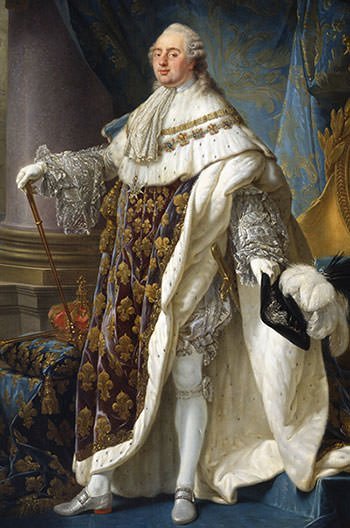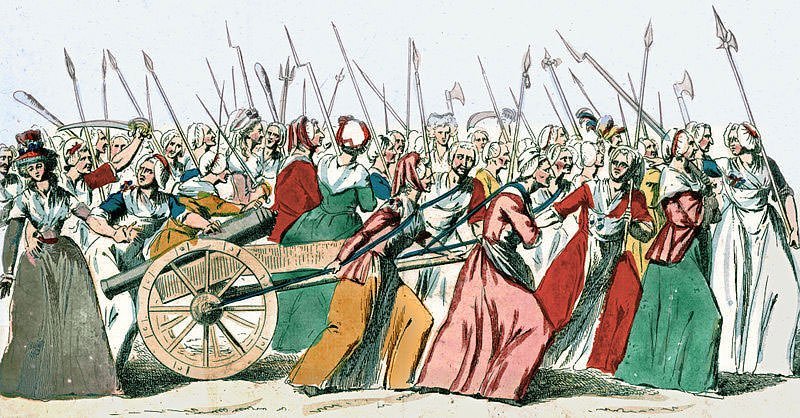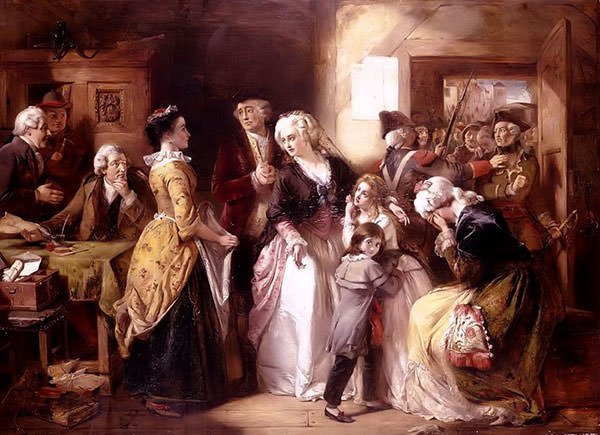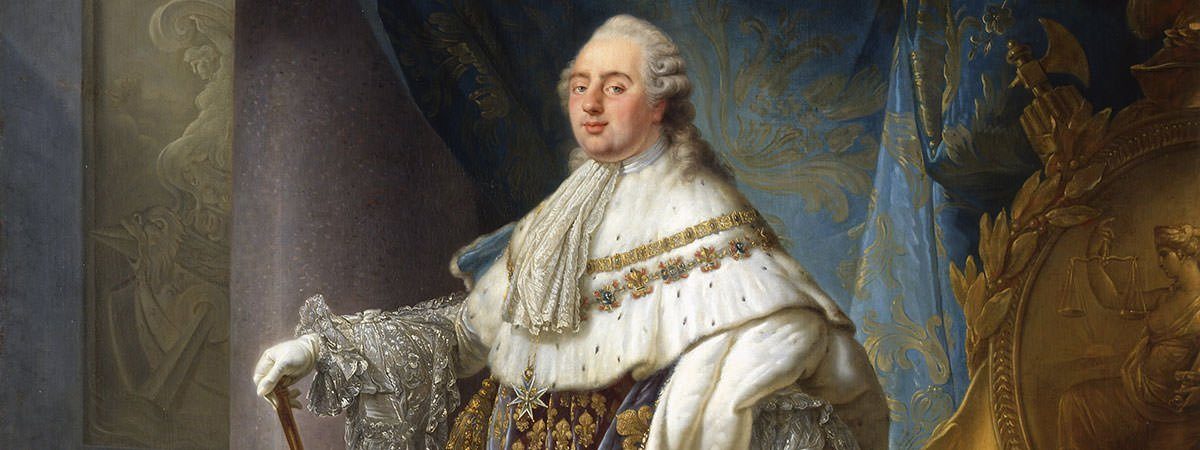Louis XVI was the monarch of France during the French Revolution till the monarchy was abolished and France was declared a Republic. He was born Louis-Auguste on 23rd August 1754 in the French Palace of Versailles. On 16th May 1770, at the age of 15, he married the 14-year-old Habsburg Archduchess of Austria Marie Antoinette. This marriage was disliked by the French public from the beginning as Austria had pulled France into the disastrous Seven Years’ War and because they considered the bride a foreigner.
American Revolutionary War
After his grandfather’s death on 10th May 1774, Louis XVI ascended the throne of France. The defeat of France in the Seven Years’ War against Great Britain had caused a financial crisis and left Louis XVI with a terrible inheritance. In 1776, Louis XIV saw an opportunity to humiliate Britain and recover the lost French territories in the Seven Years’ War by supporting the United States in the American Revolutionary War. Deciding in favor of war, despite the huge financial crisis France was facing, proved to be a grave error. Though the United States and the French won the war, the British defeated the main French fleet in 1782 and successfully defended Jamaica and Gibraltar. France gained little from the war except the colonies of Tobago and Senegal.

Financial Crisis In France
In the years leading to the French Revolution, France experienced extreme droughts that caused poor harvests and famine. This caused the price of flour to increase, which in turn raised the price of bread. Bread was the staple food for most French citizens and it has been estimated that the working class of France was spending upwards of 90% of their daily income on just bread. Louis XVI implemented deregulation of the grain market but it resulted in further increasing the bread prices.

Due to the pressure of the financial crisis, Louis XVI convoked the Estates-General on 8th August, 1788. At this time France was divided into three estates: the First was the clergy, the Second was the nobility, and the Third was the rest, which included merchants, lawyers, laborers and peasants. Though the Third Estate comprised around 98% of the French population, it was exploited by the other two estates. When its voice was not heard, the representatives of the Third Estate declared itself the National Assembly in June 1789. Louis XVI tried to counter this by locking the chamber doors and guarding them by soldiers. The Third Estate responded by moving to a Tennis Court where they pledged not to separate until they had given France a constitution.

Storming of the Bastille
As the National Constituent Assembly continued to meet at Versailles, soldiers, mostly foreign mercenaries, began to arrive in Paris. Also, Louis XVI dismissed Jacques Necker, director-general of the finances who was considered sympathetic to the common people. The Parisians interpreted these actions as an attempt toward shutting down the National Constituent Assembly. They responded by storming toward the Bastille fortress on July 14, 1789, to secure gunpowder and weapons. The troops at Bastille resisted for a few hours before they surrendered to the mob. The Storming of the Bastille is regarded as the start of the French Revolution. It resulted in King Louis XVI withdrawing the royal troops from the French capital and recalling finance minister Jacques Necker.

Forced To Move To Paris
On 5th October 1789, a large crowd of protesters, mostly women, began to assemble at Parisian markets. They were troubled due to the unaffordable prices of bread. After getting unsatisfactory responses from city officials, the women marched from Paris to the Palace of Versailles. They were convinced that the royal family lived in luxury oblivious to the problems of the common people. They stormed the palace, killing several guards and demanded King Louis XVI to “live among the people”. Louis XVI ultimately conceded to their demands. The next day, he, along with his family and most of the French Assembly, were escorted by the crowd to Paris. The national guard led the procession and some in the crowd even carried pikes bearing the heads of the slaughtered Versailles guards. The royal family moved to the dilapidated Tuileries Palace in Paris. Louis XVI understood the relevance of this event. When asked for his orders, he replied with uncharacteristic diffidence, “Let everyone put himself where he pleases!”

Attempted Escape To Austria
As the French Revolution raged on in France, Louis XVI was engaged in plans of his own. He had a council of advisers who made schemes to preserve the power of the monarchy. He also asked one of his diplomats to negotiate with other foreign heads of state in an attempt to bring about a counter-revolution. However, these schemes were by and large unsuccessful. Louis XVI then made plans to secretly escape along with his family from Paris to Austria. After escaping he hoped to recapture France with foreign assistance. On the night of 20th June 1791, the royal family fled the Tuileries Palace dressed as servants with their servants dressed as nobles.
Few people in France had seen the king personally but his image was printed on the currency. Due to this, Louis XVI was recognized the next day. The royal family were arrested at Varennes and returned to Paris. Due to his attempted flight to Austria, the public, which was already against King Louis XVI, now viewed him as a traitor who wanted foreign intervention to restore the monarchy. He was provisionally suspended by the Assembly and the royal family was placed under tight house arrest at the Tuileries Palace.

Monarchy Abolished
Following the flight to Varennes, Parisians became more and more against the king and wanted the assembly to depose him. The assembly hesitated and on August 10, 1792, around 20,000 Parisians marched on the Tuileries Palace and killed the Swiss Guards who were assigned for the protection of the king. In response, the royal family fled to the Assembly for protection. Louis XVI was officially arrested on 13th August 1792 and sent to the Temple, an ancient fortress in Paris that was used as a prison. On 21st September 1792, the monarchy was abolished and France was declared a Republic. Louis was stripped of all of his titles and honors. From this day, he was known as Citizen Louis Capet.
Trial And Execution
Though the radical revolutionaries argued for immediate execution of Louis, it was voted that the former monarch would be given a fair trial before the National Convention, the first government of the new French Republic. In November 1792, a hidden iron chest had been unearthed at the Tuileries Palace. It contained unmistakable proof of compromising documents and correspondence of Louis. On 15th January 1793, 693 of the 721 deputies found Citizen Louis guilty of treason. 23 abstained from voting and no one voted for acquittal. The next day, a vote was carried out to decide upon Louis’s fate. 288 voted against death; 72 voted for the death penalty, but not instant; and 361 of the deputies voted for immediate execution. Louis was thus condemned to immediate death by a majority of one vote.
On January 21, 1793, Citizen Louis was driven through the streets of Paris to a guillotine and decapitated. It is said that he appeared dignified and resigned. He delivered a short speech in which he pardoned “…those who are the cause of my death…. “. It is said that he desired to say more but a general of the National Guard halted the speech by ordering a drum roll. Citizen Louis was then quickly beheaded.

After execution, the corpse of Louis was transported in a cart to the nearby Madeleine cemetery and buried there in between others who had been executed. In 1815, King Louis XVIII had the remains of his brother Louis XVI buried in the Basilica of St Denis, the Royal necropolis of the Kings and Queens of France.


The seven years war DID NOT start due to Marie Antoinette being disliked, the war started before Louis XVI became king.
It is nowhere mentioned in the article that the Seven Years’ War was started due to Marie Antoinette being disliked. It is stated that the people of France disliked Marie Antoinette as Austria had pulled France into the Seven Years’ War.
You may be knowing much about this revolution. May you tell us please